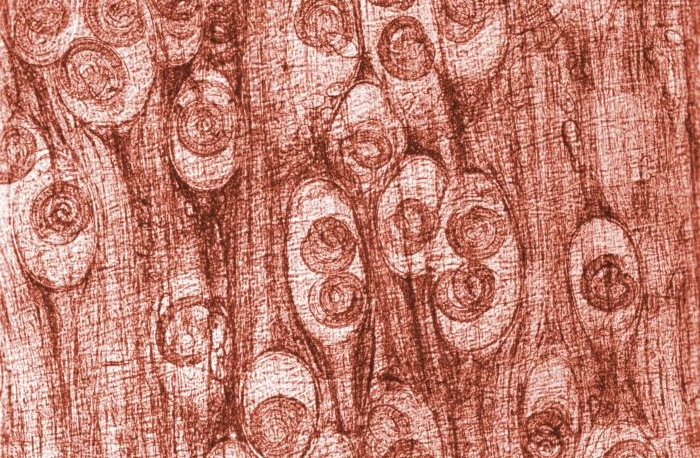This past summer, The Disease Daily reported on emerging and re-emerging tick-borne illnesses in the United States. Cases of Lyme disease have more than doubled in recent years, and less common diseases, such as Anaplasmosis, are now appearing across the northeast. While media coverage tends to concentrate on these more prominent illnesses, a recent report released by the CDC focuses its attention on a lesser known, but very real, threat presented by ticks.
On May 30, 2011 a 67-year-old woman from Aitkin, Minnesota checked into the Abbott Northwestern Hospital in Minneapolis, complaining of dizziness, high fever, chills, nausea and malaise, as well as intermittent confusion with slurred speech.
As an avid gardener and hiker, the woman had been exposed to a number of vectors endemic to her area, such as deer ticks and mosquitos. She also had a long history of medical issues, including colon cancer, hypertension, cutaneous lupus, and a remote cerebral aneurysm, which was treated surgically.
Although the patient was alert upon arrival at the medical facility, by the next day her condition severely deteriorated. Within hours she became unresponsive. Over night her breathing stopped completely and she required intubation. The patient remained in her comatose state for nearly two weeks before the medical ventilator was removed and she died.
Emerging Infectious Disease
It was not until after the patient’s death that serological testing was able to identify Powassan Virus (POWV) as the disease agent.
POWV is not a new virus, though it is a very rare one. It was first discovered in 1958 in a 5-year-old boy from Powassan, Ontario who had died of severe encephalitis. Powassan virus is a flavivirus that has been found in six different tick species, including the deer tick. Other common flaviviruses include the dengue, yellow fever, and West Nile viruses. This virus has also been isolated in various rodents, wild animals, and pets.
Between 1958 and 2010 fewer than 60 cases of POWV were reported in North America. However, physicians rarely diagnose POWV due to its rarity and nonspecific symptoms. POW encephalitis mirrors signs of similar arthropod-borne illnesses, such as eastern equine encephalitis (EEE) or La Crosse encephalitis (LAC). It is likely that other cases of suspected encephalitis or meningitis were caused by this virus, but were not reported as POWV. In 2011, there were 16 confirmed cases in the United States, all of which occurred in Minnesota and Wisconsin. The disease usually progresses to viral encephalitis, or inflammation of the brain, which can cause severe brain damage. Approximately 10 percent of cases are fatal and an additional 50 percent suffer from long-term neurological impairment, such as complete paralysis of one side of the body.
Unfortunately, POW encephalitis is very difficult to treat. There is no specific therapy available and individuals with a confirmed diagnosis can merely hope for supportive care if hospitalized. Additionally, a vaccine is not currently available and not likely to be developed due to the small disease burden associated with POWV. The best prevention methods include actions to avoid tick bites, such as wearing long sleeves and pants while outdoors and using insect repellent. Individuals should also avoid contact with potential mammal vectors of POWV, such as groundhogs and skunks.
It is easy to try and blame the increase in vector-borne infectious diseases on climate change – the emblematic environmentalist’s threat to our impending future – mainly because it is true. However the variables associated with this issue are numerous, complex, and intertwined. Climate change is certainly an overarching factor; but it only explains one chapter of a larger socio-environmental story. Globalization, population increase, international conflict and consequent population displacement, and agricultural activities all play an integral role in infectious disease emergence. Human actions as drivers of all these factors, therefore, need to come under scrutiny. “Ultimately, humanity will have to change its perspective on its place in Earth’s ecology if the species hopes to stave off or survive the next plague,” emphasizes Laurie Garrett in her book, The Coming Plague.

